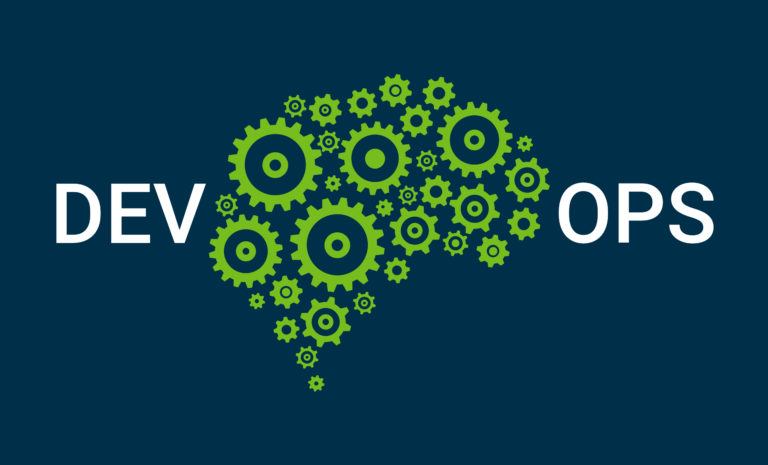Agility provides the nimbleness and flexibility to adapt to the new normal in a more pragmatic and non-linear way so that the strategic goals are accomplished. In this digital age, there is an immense need of building the strategy in an agile way which can be changed when required and focuses on the digital-first mindset by using automation and cloud computing.
As per Scaled Agile®, Business Agility is the ability to compete and thrive in the digital age by quickly responding to market changes and emerging opportunities with innovative business solutions. In this context, it is very relevant to understand the way to respond and capitalize on new innovations. At the same time, it is crucial to model an adaptive behavior which forms the very foundation of business agility and aligns with the key measures of strategic agility. In the present period of uncertainty caused due to COVID19 pandemic, a growth mindset needs to be fostered allowing inspection, adaptation, learning, experimentation and treating failure as opportunities for innovation.
Let us understand in detail the agility enabled by automation and cloud computing which are at the core of embracing an agile mindset in the digital ecosystem.
Automation provides a time-saving and efficient approach towards executing manual tasks. Since agility is not only about speed but also about staying relevant and competitive, new Ways of Thinking (WoT) and new Ways of Working (WoW) are to be continuously identified. In view of automation, the speed-to- outcomes is no doubt a driver for “digital revolution” but it also allows continuous improvement by simplifying the process-oriented approach and increases the operational efficiency by making the processes leaner. Automation also allows improved data insights for taking informed actionable decisions. The journey of automation has been tremendous starting from basic or the traditional automation to Robotic Process Automation (RPA) to Intelligent Process Automation or Hyperautomation including DevOps. Apart from reduction in cost and improving efficiency and accuracy, business agility offered by automation also addresses the following areas:
- Change in demand and supply– Automation allows for handling the change in transactional requests. For example, increased number of invoices to be processed in an SAP ERP system can be a good use case for automation if there are lot of manual repetitive steps involved in the process. The RPA tools in the market can process voluminous transactions and help in maintaining the balance between demand and supply curves. Automation will improve the operational efficiency and will shift the supply curve to the right, meaning thereby, the output can be increased with less effort and cost.
- Variability in outcomes– There are situations where the invoices with an inconsistent format are received into the ERP system which can lead to variability in outcomes. This requires a need for an intelligent automation beyond basic RPA and automation capabilities to handle such variations. The cognitive automation capability assists in reducing this variability by dealing with such inconsistencies.
- Scalability and Extensibility- Automation provides a medium to meet future demands as the business expands. It also allows designing loosely coupled extensible and configurable solutions in an iterative and incremental fashion for adding new functionalities. In the above example of invoice processing system, the credentials of the vendor and the business unit associated can be verified at the time of automatic matching against the purchase order.
- Organization culture- Automation is not only about automating process steps and continuous delivery pipeline in a software development lifecycle but to infuse an organization culture where teams continuously look for optimizing the existing solutions and refine their approaches by quick validation. This quick validation will be possible if the manual steps are minimum and the objective of automation is human augmentation.
In view of Cloud computing, the business agility is enabled through on-demand virtualization of resources. It allows the ability to rapidly develop, test and release software applications that drive business growth. Apart from faster time-to-market and pay-per-use model, it also addresses the following areas:
- Innovation rate– The rate of innovation in cloud computing model is increased because it moves from the traditional on-premise server infrastructure model to a third-party cloud service provider with service level agreements. As per Forbes article titled “Three Ways Cloud Computing Is Driving Rapid Innovation”, three trends in cloud computing are emerging which are driving a rapid innovation rate. (1) Linking systems of records with next-generation systems of engagement (2) Linking services and data together to create new and innovative applications and (3) Automating services in a hybrid cloud environment.
- Flexibility and scalability– Cloud computing offers businesses the flexibility and scalability when it comes to computing needs. Cloud computing allows accessing various applications and artefacts using web-enabled devices such as smartphones, laptops and notebooks. Cloud computing allows businesses to easily upscale or downscale IT requirements as and when required.
- Maximize value– In order to maximize the value or benefits delivered to the customers, Forbes defines a FORCE (Flexible, Original, Real-Time Cloud Ecosystem) approach that enables companies to transform how they interact with customers and suppliers. For example, automating security tasks on AWS enables you to be more secure by reducing human configuration errors and giving your team more time to focus on other work critical to your business. Similarly DevSecOps approach is another way to maximize the value of DevOps process by allowing security practices to be integrated into it and enabling security for cloud operations.
- Downtime and data recovery– Cloud-based data recovery models will ensure business continuity by allowing almost zero downtime. A proactive cloud disaster recovery strategy will help the operations to stay up and running in the event of unavailability of physical infrastructure for any length of time.
Summary:
Automation and cloud computing are the key drivers for bringing digital transformation which allows sensing the capacity of business agility to remain competitive and changing the direction when required without impacting the overarching goal. The business agility will also allow the businesses to continuously deliver value even during uncertainty by innovatively and empirically disrupting the market for improving business results, increasing market share and building sustainable and resilient systems.
Acknowledgements/References:
- https://medium.com/thehumanlayer/digital-first-the-essential-modern-business-mindset-9e116f61407e
- https://www.scaledagileframework.com/business-agility/
- https://www.gartner.com/smarterwithgartner/gartner-top-10-strategic-technology-trends-for-2020/
- https://www.forbes.com/sites/ibm/2014/09/02/three-ways-cloud-computing-is-driving-rapid-innovation/#65675fceba2d
- https://rickscloud.com/cloud-computing-enables-business-scalability-and-flexibility/
- https://www.forbes.com/sites/forbesdallascouncil/2019/02/01/how-to-maximize-your-benefits-with-cloud-computing/#1fde5d915091
- https://aws.amazon.com/security/
- https://aws.amazon.com/disaster-recovery/
- Wikipedia links
Views expressed in this article are my own and may not necessarily be of my employer.




















































































